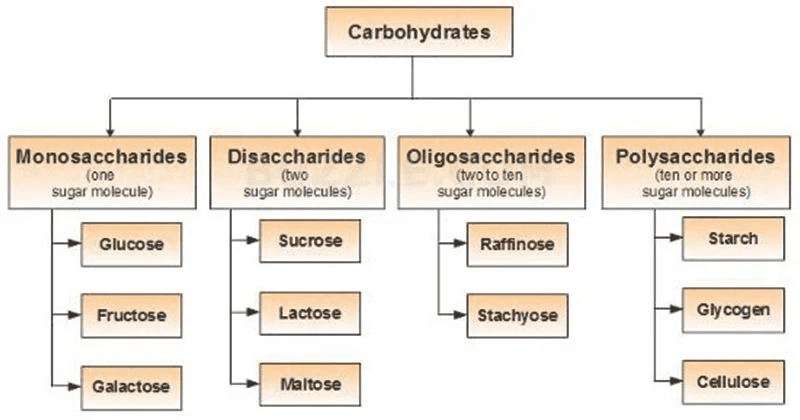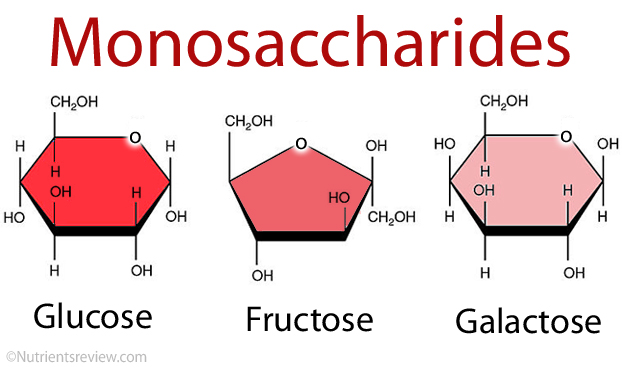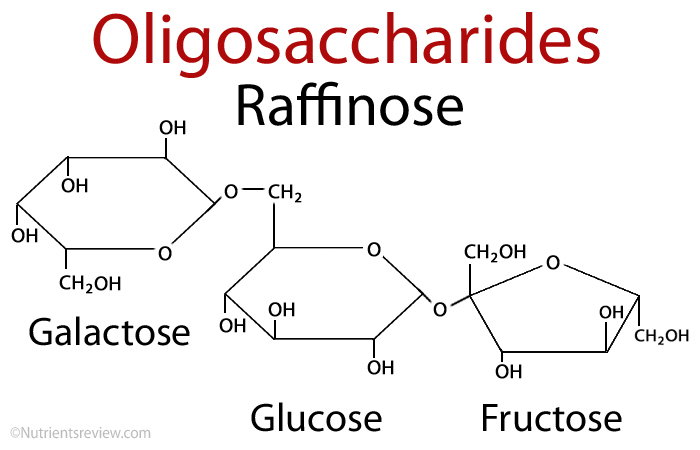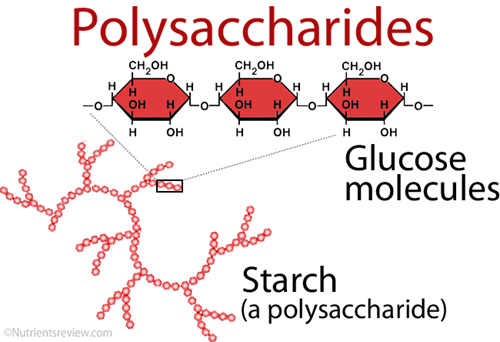011 Carbohydrates
Learning Outcomes
Describe the structure and classification of carbohydrates ;
Explain the role and function of carbohydrates in biological systems;
Identify common reactions of carbohydrates; and
Relate the importance of carbohydrates to agricultural practices
Carbohydrates in Agriculture
Carbohydrates are essential for both human life and agriculture, serving as a critical source of energy, structural components, and key players in ecological health. In agriculture, understanding the role of carbohydrates is vital for optimizing crop productivity, improving plant resilience, and ensuring food security.
One of the primary functions of carbohydrates in plants is to act as the energy source for growth. Through photosynthesis, plants convert sunlight, water, and carbon dioxide into glucose, which fuels metabolic processes essential for the synthesis of proteins, nucleic acids, and other important biomolecules. This energy is crucial for maximizing crop yield and ensuring high-quality produce. In addition, carbohydrates such as cellulose form the structural components of plant cell walls, providing rigidity and support. This not only helps plants maintain their shape but also increases their resistance to environmental stressors, such as drought or heavy winds.
Carbohydrates also serve as an energy reserve in plants. Stored as starch in roots, tubers, and seeds, these carbohydrates are mobilized when the plant requires additional energy for growth or during periods of stress. This storage capacity is essential for crop resilience, enabling plants to survive challenging conditions and maintain consistent productivity.
In addition, carbohydrates influence soil health by supporting beneficial microbial communities that aid in nutrient cycling. Healthy soil, enriched with carbohydrates, promotes nutrient availability and strengthens the ecosystem, benefiting long-term agricultural sustainability.
In conclusion, carbohydrates are indispensable to both the growth of plants and the success of agricultural practices. As agriculture students, understanding how carbohydrates impact crop production, plant health, and soil ecosystems is key to developing sustainable farming practices that meet the needs of a growing global population.
For more information, read the article Carbohydrate flow through agricultural ecosystems: Implications for synthesis and microbial conversion of carbohydrates.
Discussion 1: Understanding Carbohydrates in Agriculture
Objective:
This exercise is designed to test your understanding of the role of carbohydrates in plants and their importance in agriculture. You will be asked to apply your knowledge of carbohydrate functions in plant growth, energy storage, structural support, and soil health to real-world agricultural scenarios.
Instructions:
- Read the following scenario and answer the questions based on your understanding of carbohydrates in agriculture.
- Use your knowledge of plant biology, carbohydrate metabolism, and agricultural practices to address the questions thoroughly.
Scenario:
You are an agronomist working with a local farming cooperative to optimize the growth of a crop variety that has shown promise in your region. The crop is a type of tuber (similar to potatoes), and it has a tendency to underperform during drought seasons. The farmers have noticed that during dry periods, the plants seem to lack vigor and are more susceptible to diseases. Your task is to investigate the role of carbohydrates in improving the crop’s resilience, yield, and overall health.
Questions:
Group 1
Role of Carbohydrates in Energy Production: The crop you are studying is producing glucose through photosynthesis, but it seems to struggle during drought periods. Explain how carbohydrates like glucose and starch play a role in the plant's energy production and growth. How can improving carbohydrate storage or mobilization potentially help the crop survive drought conditions?
Group 2
Cellulose and Structural Support: You notice that the plant cells are somewhat weak and prone to collapsing, especially when exposed to wind and drought. How do carbohydrates, specifically cellulose, contribute to the structural integrity of plant cells? What might be the consequences for plant health if the plant were deficient in cellulose or had poorly formed cell walls?
Group 3
Energy Storage and Mobilization: The crop stores carbohydrates as starch in its tubers. During periods of drought, when photosynthesis is reduced, the plant relies on starch reserves for energy. How does starch serve as an energy reserve, and what process is involved in converting stored starch back into glucose when the plant needs it most?
Group 4
Impact of Carbohydrates on Soil Health: The farmers are also concerned about the health of the soil, as they notice lower nutrient availability and a decline in soil microbial activity. How do carbohydrates released from plant roots (e.g., through root exudates) influence soil microbial communities? Explain the role of carbohydrates in nutrient cycling and soil health in an agricultural context.
Group 5
Improving Crop Resilience: Based on what you know about carbohydrates, propose one agricultural practice or technique that could help enhance the carbohydrate-related aspects of plant health and resilience in the face of environmental stressors like drought. Justify your recommendation based on the role of carbohydrates in plants.
Group 6
Explain the potential prebiotic effects of carbohydrates in the soil. How might these carbohydrates influence the growth of beneficial microbes that contribute to plant health, and why might this be important for sustainable farming practices?
Evaluation Criteria:
- Understanding of Carbohydrate Functions: Do your responses show a clear understanding of how glucose, starch, and cellulose function in plants, both for energy production and structural support? 5pts
- Application to Agricultural Context: Can you apply this knowledge to real-world agricultural challenges, such as drought or soil health management? 5pts
- Scientific Rationale: Are your explanations grounded in fundamental biological processes, with logical reasoning supporting your proposed agricultural practices? 5pts
Objective:
This exercise is designed to test your understanding of the role of carbohydrates in plants and their importance in agriculture. You will be asked to apply your knowledge of carbohydrate functions in plant growth, energy storage, structural support, and soil health to real-world agricultural scenarios.
Instructions:
- Read the following scenario and answer the questions based on your understanding of carbohydrates in agriculture.
- Use your knowledge of plant biology, carbohydrate metabolism, and agricultural practices to address the questions thoroughly.
Scenario:
You are an agronomist working with a local farming cooperative to optimize the growth of a crop variety that has shown promise in your region. The crop is a type of tuber (similar to potatoes), and it has a tendency to underperform during drought seasons. The farmers have noticed that during dry periods, the plants seem to lack vigor and are more susceptible to diseases. Your task is to investigate the role of carbohydrates in improving the crop’s resilience, yield, and overall health.
Questions:
Group 1
Role of Carbohydrates in Energy Production: The crop you are studying is producing glucose through photosynthesis, but it seems to struggle during drought periods. Explain how carbohydrates like glucose and starch play a role in the plant's energy production and growth. How can improving carbohydrate storage or mobilization potentially help the crop survive drought conditions?
Group 2
Cellulose and Structural Support: You notice that the plant cells are somewhat weak and prone to collapsing, especially when exposed to wind and drought. How do carbohydrates, specifically cellulose, contribute to the structural integrity of plant cells? What might be the consequences for plant health if the plant were deficient in cellulose or had poorly formed cell walls?
Group 3
Energy Storage and Mobilization: The crop stores carbohydrates as starch in its tubers. During periods of drought, when photosynthesis is reduced, the plant relies on starch reserves for energy. How does starch serve as an energy reserve, and what process is involved in converting stored starch back into glucose when the plant needs it most?
Group 4
Impact of Carbohydrates on Soil Health: The farmers are also concerned about the health of the soil, as they notice lower nutrient availability and a decline in soil microbial activity. How do carbohydrates released from plant roots (e.g., through root exudates) influence soil microbial communities? Explain the role of carbohydrates in nutrient cycling and soil health in an agricultural context.
Group 5
Improving Crop Resilience: Based on what you know about carbohydrates, propose one agricultural practice or technique that could help enhance the carbohydrate-related aspects of plant health and resilience in the face of environmental stressors like drought. Justify your recommendation based on the role of carbohydrates in plants.
Group 6
Explain the potential prebiotic effects of carbohydrates in the soil. How might these carbohydrates influence the growth of beneficial microbes that contribute to plant health, and why might this be important for sustainable farming practices?
Evaluation Criteria:
- Understanding of Carbohydrate Functions: Do your responses show a clear understanding of how glucose, starch, and cellulose function in plants, both for energy production and structural support? 5pts
- Application to Agricultural Context: Can you apply this knowledge to real-world agricultural challenges, such as drought or soil health management? 5pts
- Scientific Rationale: Are your explanations grounded in fundamental biological processes, with logical reasoning supporting your proposed agricultural practices? 5pts
Structure of Carbohydrates
Carbohydrates are essential biomolecules that play a central role in energy storage, structural integrity, and metabolic processes in living organisms. These molecules are primarily composed of carbon (C), hydrogen (H), and oxygen (O) atoms, typically following the empirical formula Cₙ(H₂O)ₙ, where the ratio of hydrogen to oxygen is 2:1, similar to water. Understanding the structure of carbohydrates is crucial for agriculture students, as these compounds are vital for plant growth, crop production, and soil health.
Carbohydrates are classified into four main categories based on their structure:
- Monosaccharides: The simplest form of carbohydrates, consisting of single sugar units. Common examples include glucose and fructose. These sugars are the building blocks for more complex carbohydrates and are directly involved in energy production in plants.
- Disaccharides: These consist of two monosaccharide units linked by glycosidic bonds. Sucrose, composed of glucose and fructose, is a well-known example. Disaccharides serve as transportable energy sources in plants.
- Oligosaccharides: These are carbohydrates containing three to ten monosaccharide units. Oligosaccharides play roles in cell recognition and signaling, particularly in plant cell membranes.
- Polysaccharides: These are large, complex carbohydrates made up of many monosaccharide units. Examples include starch, which stores energy in plants, and cellulose, which provides structural support in plant cell walls.
The structure of carbohydrates directly influences their functions in plants. For agriculture students, understanding how these molecules function and interact is essential for optimizing crop growth, improving soil fertility, and enhancing food production.
Physical Properties of Carbohydrates
Carbohydrates exhibit several key physical properties that influence their role in both plant biology and agricultural practices. Understanding these properties is crucial for agriculture students as they affect plant growth, food production, and storage.
One of the most important physical properties is solubility. Monosaccharides and disaccharides, such as glucose and sucrose, are highly soluble in water due to their ability to form hydrogen bonds with water molecules. This solubility allows plants to transport these sugars through their vascular system, supporting energy distribution throughout the plant. On the other hand, polysaccharides like starch are less soluble, which is advantageous for energy storage in plant roots and seeds. However, cellulose, another polysaccharide, is largely insoluble and forms the rigid structure of plant cell walls, contributing to mechanical strength and protection.
Carbohydrates also exhibit a range of tastes, with many monosaccharides and disaccharides being sweet. For instance, fructose is sweeter than glucose, which is important for plant-pollinator interactions, as sweet fruits attract animals that aid in seed dispersal.
In terms of crystallinity, simple sugars like glucose and sucrose often form well-defined crystals, which can be observed in processed foods and sugars extracted from crops. Color is generally absent in pure carbohydrates, though some may undergo color changes when exposed to heat or reagents, like the Maillard reaction during cooking.
Hygroscopicity, or the ability to absorb moisture, is another property used in food preservation. Carbohydrates also display optical activity, which means they can rotate plane-polarized light—an important characteristic for identifying and analyzing sugars in agricultural products.
In conclusion, the physical properties of carbohydrates directly impact their functions in plants and their use in agriculture, from energy storage to food processing and preservation.
Chemical Properties of Carbohydrates
Carbohydrates are not just simple energy sources—they also undergo a variety of chemical reactions that are crucial for their biological roles and practical applications in agriculture. Understanding these reactions can enhance our ability to improve crop production, food preservation, and bioengineering.
One key reaction is oxidation, where the aldehyde or ketone group in monosaccharides can be oxidized to form sugar acids. For example, glucose can be oxidized to gluconic acid, a process that is important in plant metabolism and can be used in food processing. Conversely, reduction occurs when the carbonyl group of a monosaccharide is reduced to an alcohol, forming sugar alcohols like sorbitol, which have applications in food sweetening and preservation.
Hydrolysis is another vital reaction in which disaccharides and polysaccharides are broken down into their monosaccharide units by the addition of water. For example, sucrose hydrolyzes into glucose and fructose. This reaction is essential for energy release in plants and is central to digestion in humans and animals.
Carbohydrates also undergo glycoside formation, where two monosaccharides or a monosaccharide and an alcohol combine to form a glycosidic bond, releasing water. This reaction is crucial in forming disaccharides like maltose, which plants use to store energy.
In conclusion, these chemical reactions demonstrate the versatility of carbohydrates and their significance in both plant biology and agricultural applications. Understanding them is essential for advancing sustainable farming practices and improving crop yield and food processing.
Discussion 2: Understanding the Structure and Properties of Carbohydrates in Agriculture
Objective:
This exercise is designed to assess your knowledge of the structure, physical properties, and chemical reactions of carbohydrates, focusing on their importance in plant biology and agriculture. By applying your understanding of carbohydrates, you will explore how these molecules influence crop growth, energy storage, and food processing.
Instructions:
- Read the following scenario and answer the questions based on your knowledge of carbohydrate structure, physical and chemical properties, and their relevance to agriculture.
- Use your understanding of how carbohydrates function in plants to explain the implications of each question.
Scenario:
You are a researcher working with a team of agricultural scientists tasked with optimizing crop productivity in a region with varying climates. The crops in question are a combination of tubers and grains, which store significant amounts of starch, and fruit crops, which contain high levels of sucrose. The region experiences both wet and dry seasons, and the crops must be able to withstand both environmental stress and the need for efficient energy storage.
You have been asked to investigate how carbohydrates impact energy storage, plant resilience, and crop yield, as well as how carbohydrate properties affect post-harvest food processing and preservation.
Questions:
Group 1
Monosaccharides such as glucose and fructose are important for energy production in plants. Explain why glucose is considered a primary energy source for plants. How does its structure contribute to its role in metabolism?
Group 2
Starch is less soluble than sucrose, making it suitable for long-term storage in plant roots and tubers. Explain why this property of starch is beneficial for plant survival during periods of low water availability or reduced photosynthesis.
Group 3
The tuber crop you are working with stores energy as starch. What is the structural difference between starch and cellulose, and how does this difference impact their solubility and function in plants?
Group 4
Solubility of carbohydrates plays a role in their movement through plant vascular systems. Explain how the solubility of glucose and sucrose affects their transport in plants. Why are these sugars soluble in water, and what advantage does this provide for plant nutrient distribution?
Group 5
Cellulose is a key component of plant cell walls and is largely insoluble in water. What is the significance of cellulose in terms of its contribution to soil structure and health after plant decomposition?
Group 6
Hygroscopicity refers to the ability of carbohydrates to absorb moisture. Why is this property important for food preservation in agriculture, and how could it affect the storage of crops like grains or tubers?
Evaluation Criteria:
- Understanding of Carbohydrate Structure: Are your answers grounded in the basic structure of carbohydrates (monosaccharides, disaccharides, oligosaccharides, polysaccharides) and how their chemical bonds influence their function? 5pts
- Application to Agriculture: Can you explain the relevance of carbohydrate properties (like solubility, hygroscopicity, and hydrolysis) to plant growth, crop yield, and food processing in agriculture? 5pts
- Scientific Rationale: Do your responses demonstrate an understanding of the biochemical processes, such as hydrolysis and starch mobilization, and how they impact energy storage, plant resilience, and overall agricultural productivity? 5pts
Objective:
This exercise is designed to assess your knowledge of the structure, physical properties, and chemical reactions of carbohydrates, focusing on their importance in plant biology and agriculture. By applying your understanding of carbohydrates, you will explore how these molecules influence crop growth, energy storage, and food processing.
Instructions:
- Read the following scenario and answer the questions based on your knowledge of carbohydrate structure, physical and chemical properties, and their relevance to agriculture.
- Use your understanding of how carbohydrates function in plants to explain the implications of each question.
Scenario:
You are a researcher working with a team of agricultural scientists tasked with optimizing crop productivity in a region with varying climates. The crops in question are a combination of tubers and grains, which store significant amounts of starch, and fruit crops, which contain high levels of sucrose. The region experiences both wet and dry seasons, and the crops must be able to withstand both environmental stress and the need for efficient energy storage.
You have been asked to investigate how carbohydrates impact energy storage, plant resilience, and crop yield, as well as how carbohydrate properties affect post-harvest food processing and preservation.
Questions:
Group 1
Monosaccharides such as glucose and fructose are important for energy production in plants. Explain why glucose is considered a primary energy source for plants. How does its structure contribute to its role in metabolism?
Group 2
Starch is less soluble than sucrose, making it suitable for long-term storage in plant roots and tubers. Explain why this property of starch is beneficial for plant survival during periods of low water availability or reduced photosynthesis.
Group 3
The tuber crop you are working with stores energy as starch. What is the structural difference between starch and cellulose, and how does this difference impact their solubility and function in plants?
Group 4
Solubility of carbohydrates plays a role in their movement through plant vascular systems. Explain how the solubility of glucose and sucrose affects their transport in plants. Why are these sugars soluble in water, and what advantage does this provide for plant nutrient distribution?
Group 5
Cellulose is a key component of plant cell walls and is largely insoluble in water. What is the significance of cellulose in terms of its contribution to soil structure and health after plant decomposition?
Group 6
Hygroscopicity refers to the ability of carbohydrates to absorb moisture. Why is this property important for food preservation in agriculture, and how could it affect the storage of crops like grains or tubers?
Evaluation Criteria:
- Understanding of Carbohydrate Structure: Are your answers grounded in the basic structure of carbohydrates (monosaccharides, disaccharides, oligosaccharides, polysaccharides) and how their chemical bonds influence their function? 5pts
- Application to Agriculture: Can you explain the relevance of carbohydrate properties (like solubility, hygroscopicity, and hydrolysis) to plant growth, crop yield, and food processing in agriculture? 5pts
- Scientific Rationale: Do your responses demonstrate an understanding of the biochemical processes, such as hydrolysis and starch mobilization, and how they impact energy storage, plant resilience, and overall agricultural productivity? 5pts







.png)
.png)
.png)
Comments
Post a Comment